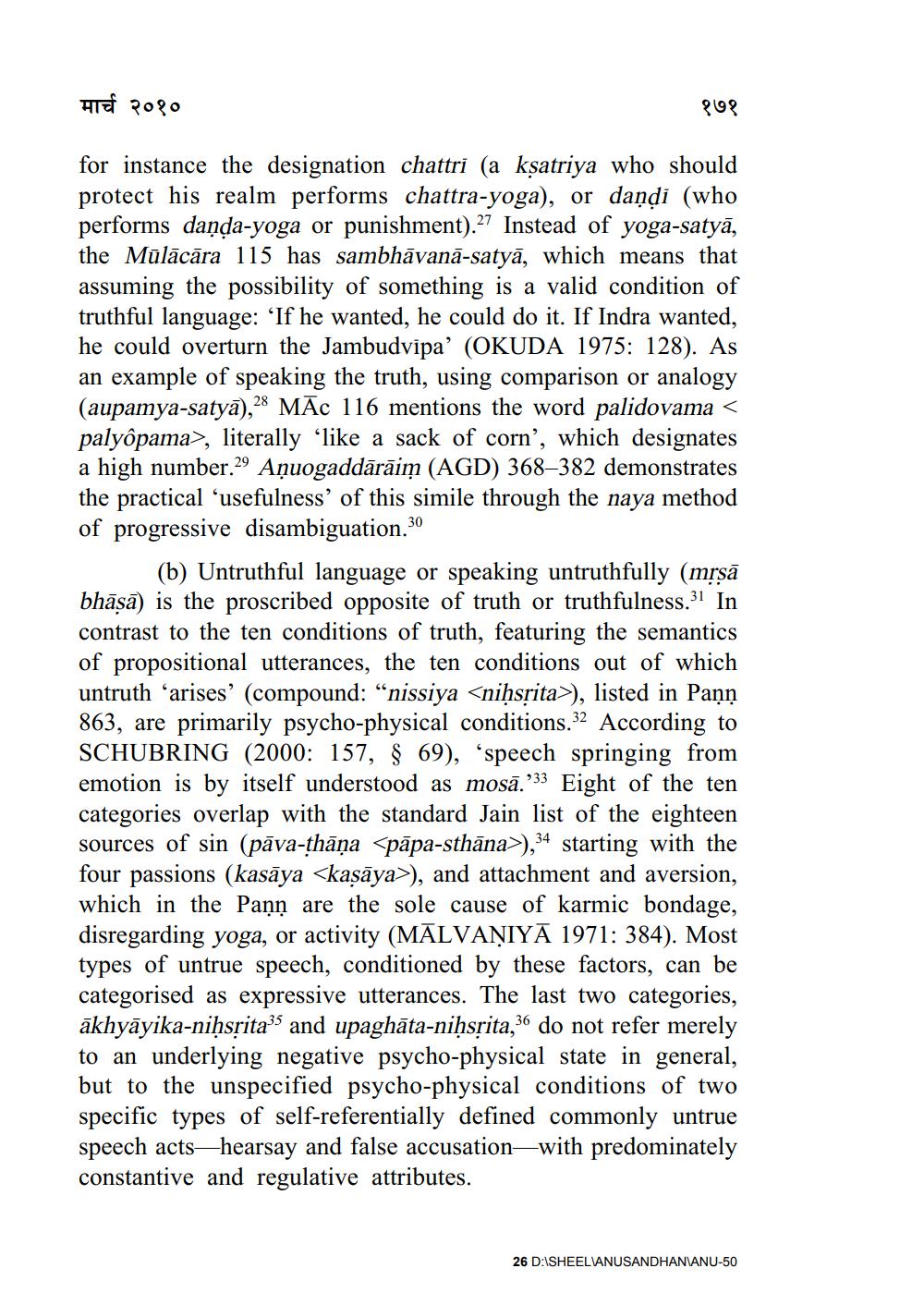Book Title: Truthfullness and Truth in Jaina Philosophy Author(s): Peter Flugel Publisher: ZZ_Anusandhan View full book textPage 6
________________ मार्च २०१० १७१ for instance the designation chattri (a ksatriya who should protect his realm performs chattra-yoga), or daņdi (who performs daņda-yoga or punishment).27 Instead of yoga-satyā, the Mūlācāra 115 has sambhāvanā-satyā, which means that assuming the possibility of something is a valid condition of truthful language: 'If he wanted, he could do it. If Indra wanted, he could overturn the Jambudvipa' (OKUDA 1975: 128). As an example of speaking the truth, using comparison or analogy (aupamya-satyā),28 MĀC 116 mentions the word palidovama < palyôpama>, literally like a sack of corn', which designates a high number.29 Aņuogaddārāim (AGD) 368–382 demonstrates the practical ‘usefulness' of this simile through the naya method of progressive disambiguation.30 (b) Untruthful language or speaking untruthfully (mrsā bhāṣā) is the proscribed opposite of truth or truthfulness.31 In contrast to the ten conditions of truth, featuring the semantics of propositional utterances, the ten conditions out of which untruth ‘arises' (compound: “nissiya <niḥspita>), listed in Pann 863, are primarily psycho-physical conditions.32 According to SCHUBRING (2000: 157, § 69), 'speech springing from emotion is by itself understood as mosā.°33 Eight of the ten categories overlap with the standard Jain list of the eighteen sources of sin (pāva-thāņa <pāpa-sthāna>),34 starting with the four passions (kasāya <kasāya>), and attachment and aversion, which in the Pann are the sole cause of karmic bondage, disregarding yoga, or activity (MĀLVANIYĀ 1971: 384). Most types of untrue speech, conditioned by these factors, can be categorised as expressive utterances. The last two categories, ākhyāyika-niḥssita’s and upaghāta-niḥsrita,36 do not refer merely to an underlying negative psycho-physical state in general, but to the unspecified psycho-physical conditions of two specific types of self-referentially defined commonly untrue speech actshearsay and false accusation—with predominately constantive and regulative attributes. 26 D:\SHEELANUSANDHANVANU-50Page Navigation
1 ... 4 5 6 7 8 9 10 11 12 13 14 15 16 17 18 19 20 21 22 23 24 25 26 27 28 29 30 31 32 33 34 35 36 37 38 39 40 41 42 43 44 45 46 47 48 49 50 51 52 53
